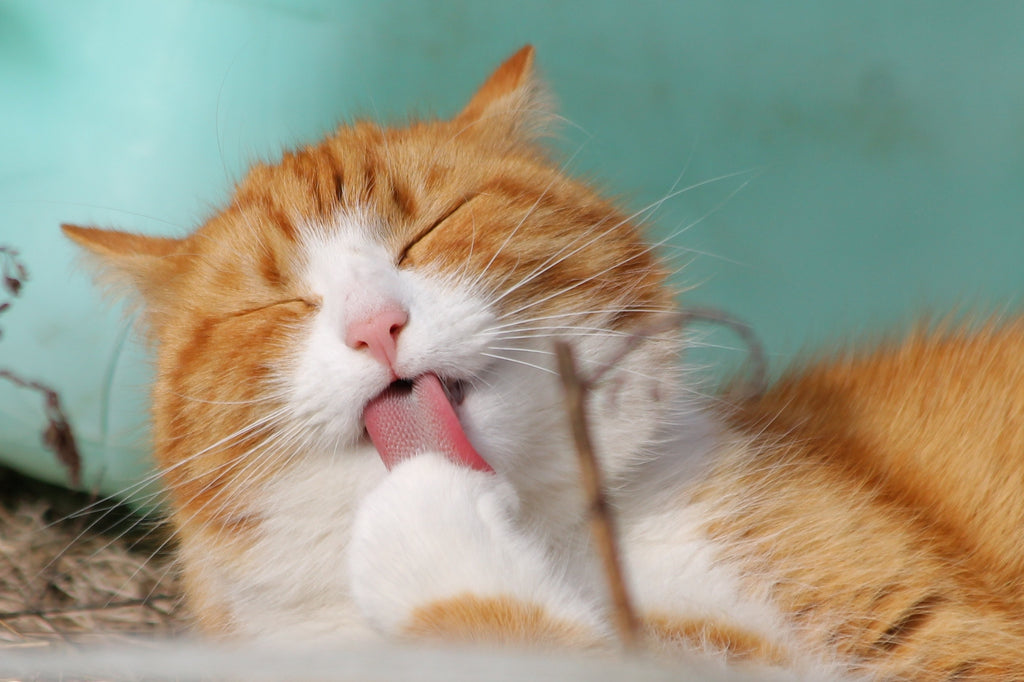Understanding cat behaviour is key to providing a good home for your moggy, but how well do you really know your cat? As humans, we’re quick to anthropomorphise animals - which simply put, means applying human emotions to cats. In fact, cat behaviour is a little more complex. Whilst cats certainly respond to human behaviour, there are a whole different range of actions, feelings and expressions which are intrinsic to our feline friends.
What do cats think of us?
Us cat owners might be guilty of projecting our own feelings onto our animals – but, to some extent, cats do the same thing! Studies show that cats don’t change their behaviour around humans, indicating that they don’t differentiate between us and them. In essence, cats see us as bigger versions of themselves and when they stare curiously at us or rub against our legs, they’re interacting with us in the same way they would their mother.
What is normal cat behaviour?
Every cat is different, so there’s no hard and fast rule when it comes to cat behaviour. Some felines may be more playful or sociable, whilst others can be shy and quiet. However, there are some set standards which are recognised as normal cat behaviour. Vocalisation, such as purring or meowing, is a common thread in cat behaviour, which they use to seek attention, communicate their needs, and signal illness or hunger amongst other things. Rubbing against a person, animal or object is also very common in cats. They do this to transfer their scent and mark their territories. Similarly, cats may carry out a long, slow blink when they’re looking at you or at another cat - something they do to show affection. In addition to this, regular play, hunting and rest time are innate to cats, with many felines spending much of the day sleeping or grooming themselves.

What does cat behaviour body language tell us?
Cats communicate predominantly via body language, so observing your pet can tell you everything you need to know about their state of mind. Even a cat’s posture when stationary is revealing, with relaxed moggies often lying on one side or sitting, with their tails extended or loosely wrapped. Conversely, when a cat lies or stands with the back part of their body close to the ground it can indicate tension. Often combined with extended front legs, bent hind legs and tail close to the body, this type of body language implies that your cat is feeling tense, stressed or anxious.
As well as using a cat’s posture to understand their feelings, it’s important to look at the cat’s body language when it’s active in order to find out more. When cats rub against something, for example, they aren’t simply expressing their love for it. In fact, they’re scent-marking, using glands in their cheeks to claim ownership of their chosen human, object or fellow cat.
When assessing your cat’s body language, pay particular attention to their head, ears, tail and back posture, as these areas give the most obvious indicators of a change in emotion or behaviour. Whilst there are many body language signals to look out for, knowing how your cat communicates is key to understanding them.
What causes a cat behaviour change?
Cats are sensitive to their environment and changes in your home life can lead to a change in cat behaviour. The loss of a loved one, a move to a new home or someone else joining the family may make your cat feel anxious, and this could result in a behaviour change occurring.
However, some behavioural changes can be caused by medical conditions. If this behaviour seems unexplained, or is persistent, you should always seek professional help and rule out a medical cause of behavioural changes before taking any other action.
What to do about cat behaviour problems
Cat behaviours, such as spraying, may be normal but that doesn’t mean you want to encourage them! In order to address cat behaviour problems effectively, you first need to identify why your cat is behaving in a particular way.
If your cat suddenly starts spraying after someone new moves in, there’s a good chance they’re trying to re-establish their territory. Giving your cat its own space is a good way of reassuring your cat, thus minimising the need to spray. Clean up all spray marks with soapy warm water, not bleach - as this will encourage them to spray again due to the unfamiliar scent.
Of course adhering to the litterbox rules (one tray per cat, away from food + water, and unscented litter) - could help, as well as certain products such as Feliway, clinically proven to reduce spraying.

Learning cat communication
Once you understand how cats communicate, you can begin to engage with them more effectively. Cats use a long, slow blink to signal affection and trust, for example, and this is something you can easily mirror.
Reading your cat’s body language and knowing when they want to interact and when they need space is also a great way of communicating effectively with your feline and giving them what they need.
Do cats love humans?
People often ask if cats love humans or whether they simply see us as a source of food and shelter. As most cat owners will tell you, our feline friends are certainly capable of loving us and they show it on a regular basis. With an understanding of cat behaviour and body language, you’ll be able to pick up on these signs of affection more easily and when you do, you’ll be in no doubt that cats can love humans just as much as we love them.
About Gus & Bella's cat subscription box:
Do you love cats? Then you'll love Gus & Bella's cat subscription box, the most exciting way to treat your cat (and yourself!) each month or as a one-off gift. Find out more.
Each cat subscription and one-off gift box has 7+ products, all chosen to promote the health and happiness of you and your cat and tailored to an adorable monthly theme.

You can join our mail list here for a chance to WIN a Gus & Bella Box, and keep up to date with unboxing videos, new theme announcements, promotions - and cute cat content of course!




